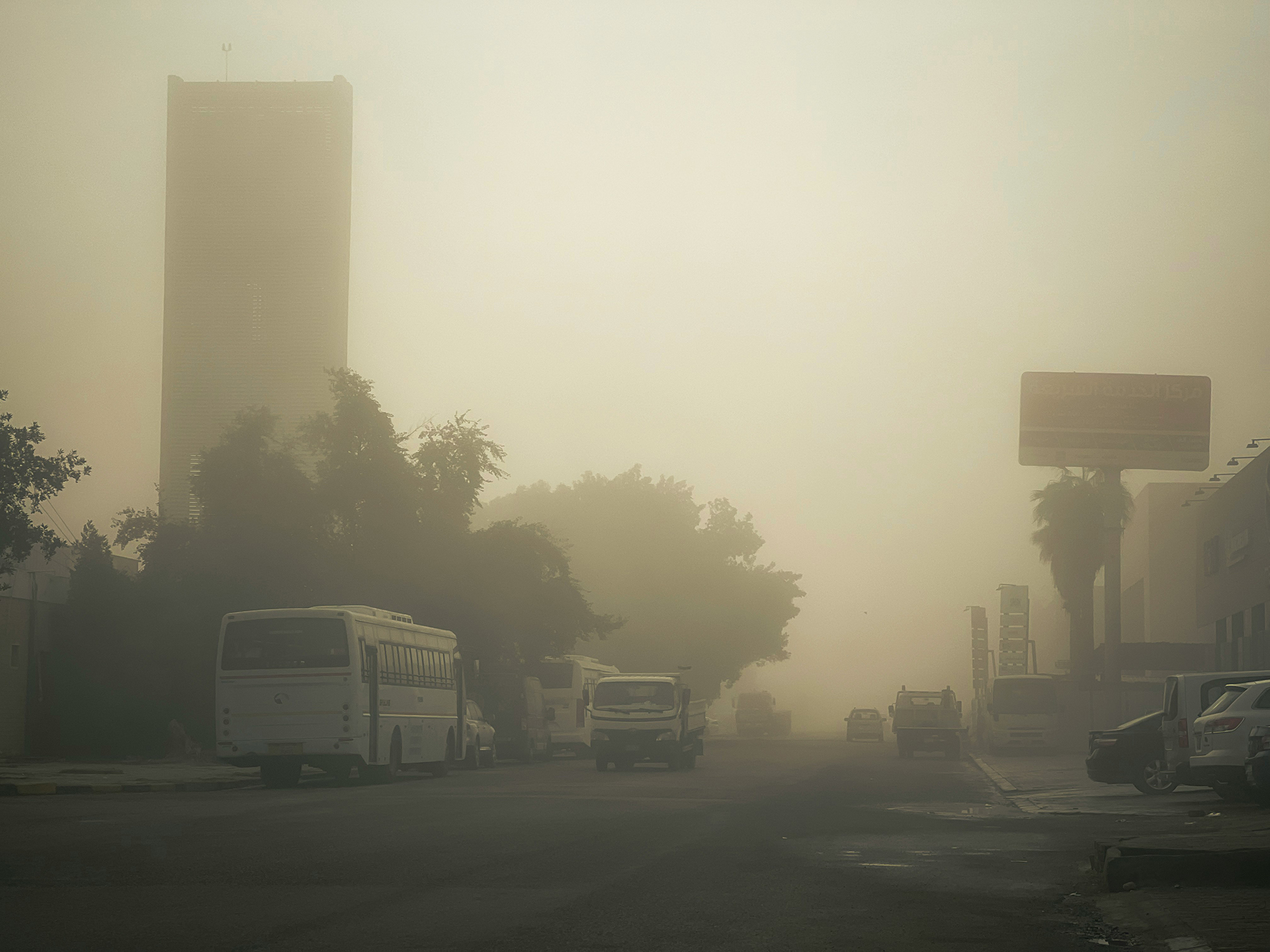As October ends, winds begin to sweep through North India, and the country prepares for its annual struggle with worsening air pollution. We have just experienced an October that has been wetter than normal, with higher temperatures as well. Historically, October is associated with retrieving monsoon and a phenomenon of ‘October Heat’ which signals the coming of winters. For millions of Indians, winters don’t simply signify colder weather, they herald a period of respiratory distress, eye irritation, and renewed calls for action in the face of hazardous air. Combinations such as above normal rainfall and above normal temperature occurring together have become the new normal in the times of climate change. Still, worsening air pollution has remained constant for several years now.
Why Air Quality Worsens in Winter
India’s winter air quality challenges are well-documented and intensifying. Meteorological conditions, stubble burning in Punjab and Haryana, traffic and industrial emissions, and sluggish policy enforcement create a persistent veil of pollution over cities and towns, especially in Delhi and many Indo-Gangetic Plain districts. Local geographic conditions intensify the situation in North India. Health consequences, particularly for children and the elderly, are dire with spikes in asthma, lung and cardiovascular disease, and even deaths attributable to PM2.5 and other toxic particulates. In fact, recent studies have shown that PM2.5 has breached the blood-brain barrier, and further studies are being conducted to understand its long-term implications.
While the problem is massive and multifaceted, real change requires harnessing both grassroots advocacy and direct community engagement. Below, we explore how two studies—one focused on digital youth-led activism (PPDN) and another on the attitudes of front-line health workers (ASHA) provide lessons, solutions, and a sense of optimism for India’s clean air future.
The Untapped Potential of Community Health Workers
A study conducted by DS on Accredited Social Health Activists’ (ASHAs) perception of air pollution highlights the critical but still under-utilized role ASHAs could play in India’s fight against air pollution. Across 333 ASHAs in six highly affected districts (Delhi, Nagpur, Dhanbad, Patna, Ludhiana, Indore), some striking patterns emerge:
- High Awareness: Most ASHAs recognize major outdoor pollution sources (traffic, industry, stubble burning) and understand air pollution as a genuine health hazard.
- Personal Motivation: ASHAs are strongly motivated to address air pollution. A resounding 95% expressed willingness to work on air pollution if given the chance, perceiving the risks to their own children and families as both immediate and long-term.
- Barriers to Effectiveness: Key obstacles include low community responsiveness (especially from men), overwhelming workloads, poor support from the health system, and limited access to proper training and resources. Outsiders or higher-status officials seem to command greater trust, complicating ASHAs’ advocacy efforts.
- Community Change Drivers: ASHAs demonstrated impact through creative grassroots actions: switching households to LPG, conducting awareness rallies through Mahila Samiti groups, advocating against polluting factories, celebrating Environment Day with tree planting and clean-up campaigns, and collaborating with local “Warrior Moms” for AQI monitoring.
If sustained and scaled, ASHA-driven interventions could fundamentally transform community attitudes and behaviors about air pollution—moving conversation from government halls into everyday life.
Making Clean Air Advocacy Go Viral
Digital storytelling and youth-led activism represent the other critical instrument for change. DS was part of a project wherein 314 young participants (aged 11–20), mostly from marginalized backgrounds in peri-urban and rural India, were mobilized to create and share content focused on Air Quality (AQ), Girl Capital (GC), and Adolescent Reproductive and Sexual Health (ARSH).
What Worked:
- Social Media as Amplifier: Young creators used WhatsApp, Instagram, Facebook, and YouTube to produce relatable, locally flavored content—videos, reels, audiocasts—on causes and effects of air pollution, culminating in viral hashtag campaigns like #HawaKeRakshak.
- Real Impact: Over 56 million impressions and 28.3 million views accrued for all content. The air quality campaign alone received 72 media pickups, with youth stories featured in leading media outlets and even showcased by government officials and global partners like UNEP.
- Behavioral Shifts: The reach and engagement for air pollution content spiked dramatically during campaign days (e.g., Earth Day, Swachh Bharat Divas), achieving a positive shift in youth attitudes and sparking everyday action (tree planting, reducing vehicle use, reporting polluters).
Synergies in ASHAs and Digital Storytelling by Youth
India’s annual winter pollution crisis won’t be solved by policy alone. The combined findings of these reports argue convincingly for a “bottom-up” model, leveraging the strengths of ASHAs and youth activists. While the ASHA workers have been instrumental in tackling the problem of indoor air pollution, there is merit in exploring the potential of ASHA workers in the fight against air pollution. Combining the on-ground work of ASHAs with the digital storytelling of youth activists can kick-start a community-led movement against air pollution.
- ASHAs as Catalysts: Train, incentivize, and support health workers to mainstream air pollution advocacy alongside maternal and child health. Let them serve as visible, trusted community change agents, especially among vulnerable households.
- Youth as Storytellers: Harness the creative prowess and digital reach of India’s young people. Run sustained digital campaigns, not just one-offs, to keep air quality high on the public agenda year-round.
- Coordinated Advocacy: Facilitated collaborations between ASHAs, youth influencers, NGOs, and local administrations. Peer support—from both mothers and young leaders—can address resistance and scale up impact.
- Inclusivity and Scaling: Ensure men, marginalized groups, and local leaders are welcomed into these efforts. Translate successful pilots into state and national programs, using digital dashboards and social media metrics to monitor and adapt strategies.
- Celebrate Progress: Publicly recognize successful community campaigns—whether it’s an ASHA-led tree planting drive or a student-produced viral video—in media, awards, and government forums.
Conclusion: Clean Air is Everyone’s Demand
The winter air pollution challenge in India is formidable, but not insurmountable. These studies show that when empowered and equipped, the citizens and on-ground workers can drive a movement for clean air that’s local, digital, and enduring. It is important to underline that pollution does not suddenly appear in winters; it is the climax of the polluting activities done throughout the year.
This season, as smog returns to sky and screen, let us remember clean air is not simply a government mandate, but a community demand. The change will come when engagement is authentic, inclusive, and ongoing when India’s women and youth are at the forefront, sharing stories and solutions for all.
Bibliography
Author: Mohit Krishna, Manager – Monitoring and Evaluation, Development Solutions
Cover Image: https://unsplash.com/photos/a-foggy-street-with-several-buses-parked-on-the-side-of-the-road-n3hAjifigwQ?utm_content=creditShareLink&utm_medium=referral&utm_source=unsplash

